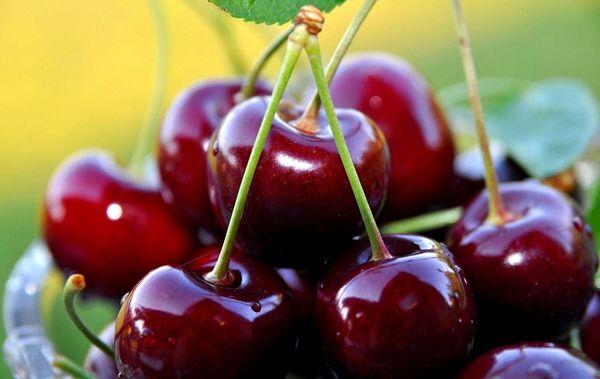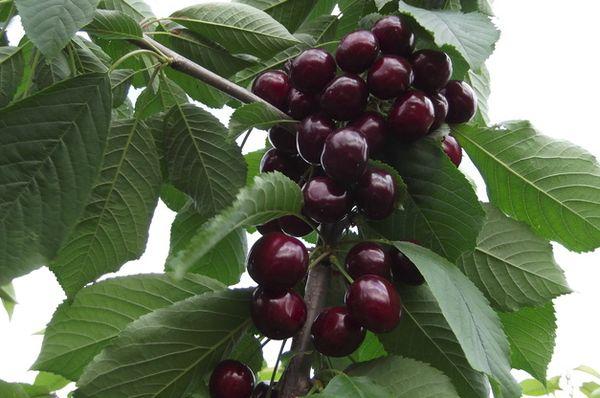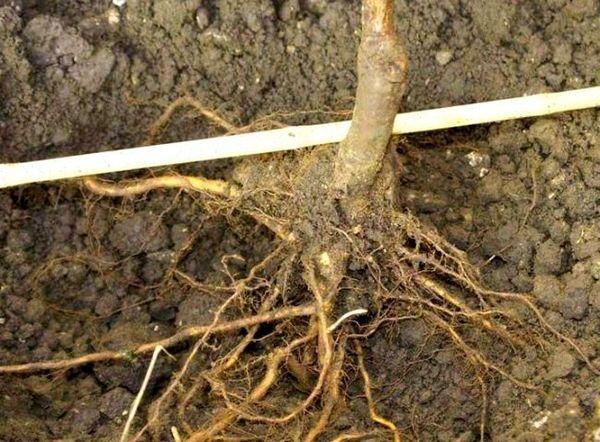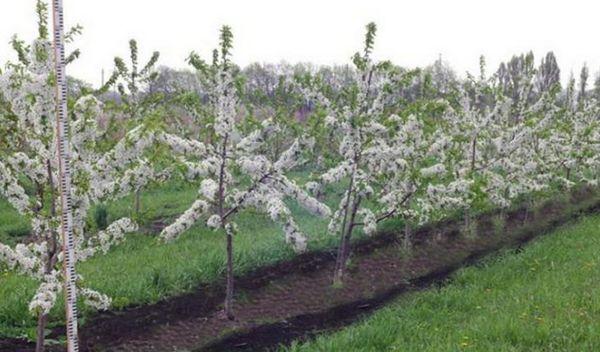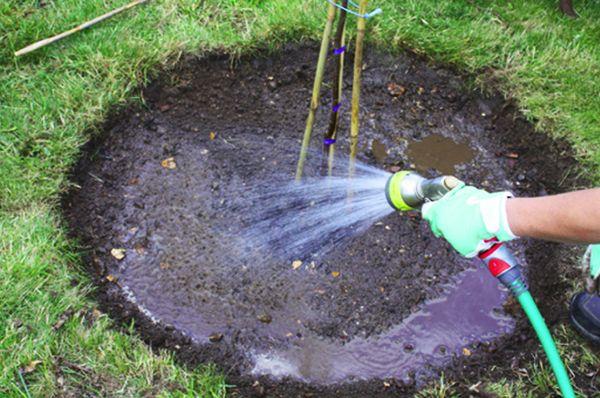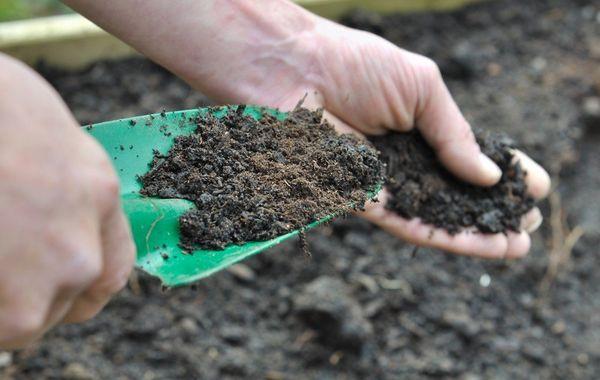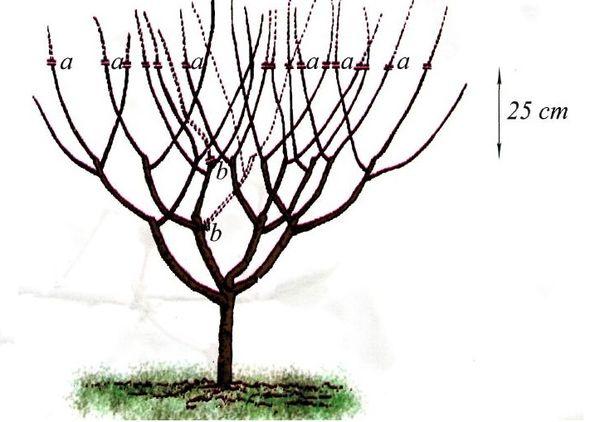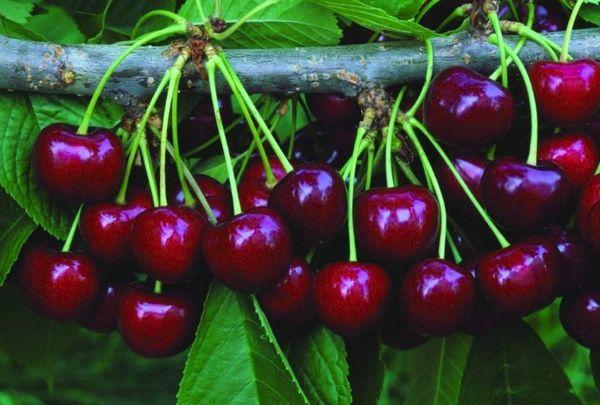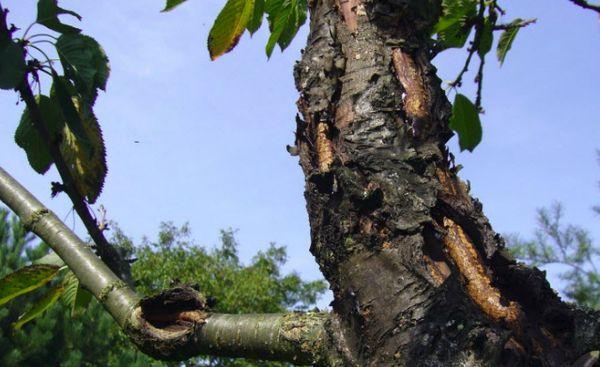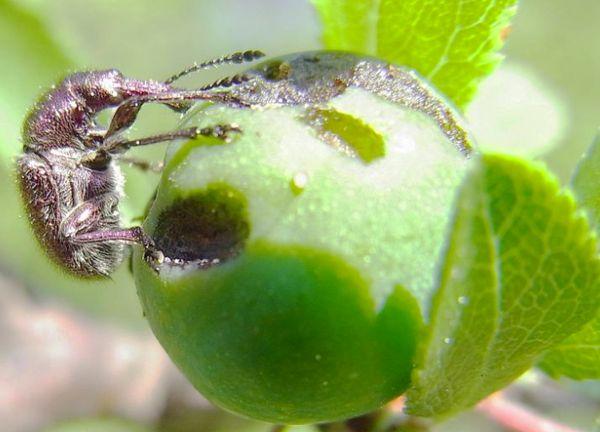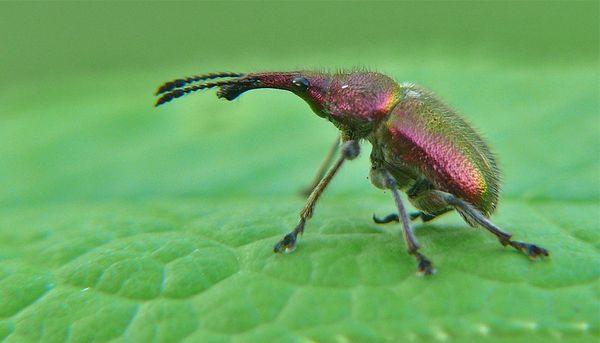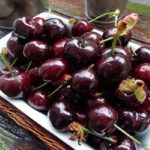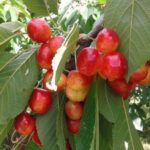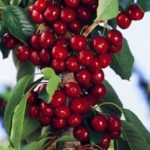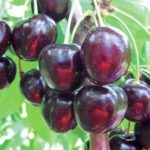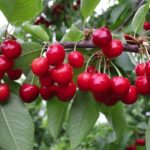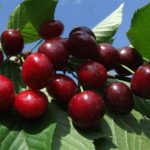The cherry variety, called Bull's Heart, was bred by Soviet scientists for the Caucasus and southern regions of the USSR. Over time, fruit trees began to be cultivated in the Black Earth Region and central Russia. The variety is loved by domestic gardeners for its large size and pronounced taste of berries.
Description and characteristics of the variety
The height of an adult tree varies from three to five meters.The leaves are large, pointed at the end, and dark green in color. The intensive growth of the seedling slows down by the fourth year. At this time, a pyramidal sparse crown with strong skeletal branches is fully formed, and fruiting begins.
Gaps in the foliage are provided to facilitate the penetration of insects into the inflorescences, which consist of 2–4 saucer-shaped white flowers. The description of the variety includes the budding period, which for the Bull's Heart begins closer to mid-May and ends after a week or a week and a half.
The berries of the fruit tree are similar in color and shape to the heart of an ox, so the second name of the crop is Ox Heart. The fruit size is 7–10 mm, the skin is dark wine color, the flesh is lighter. The taste is sweet, with a piquant sourness, and may vary depending on the number of sunny days a year and proper care. Separating the bone is difficult.
In good years, up to 50 kg of berries are collected from one cherry tree of the Bull Heart variety, used fresh and canned. Even after heat treatment, the fruits retain some of the vitamins C, PP, group B, macro and microelements. The berries ripen unevenly, harvesting begins in the first days of summer and lasts until the end of June. If you are late in harvesting, they will not fall off immediately, but will gradually dry out on the stalk.
Pros and cons of cherries
The Bull's Heart cherry variety has been recognized for its sweet and sour taste and outstanding size. The advantages of culture do not end there.
The following characteristics are attractive to gardeners:
- frost resistance during preparatory activities;
- short-term drought resistance;
- productivity;
- easy separation of berries from the stalk;
- high resistance to coccomycosis, which affects other varieties of cherries and cherries.
Disadvantages include small shelf life of cherries fresh, impossible to transport over long distances. Sweet cherries do not tolerate waterlogging of the soil and sudden changes in temperature, which results in cracking of the peel.
To avoid crop losses, the berries are consumed fresh or cooked immediately after harvest.
Features of growing a tree
To form fruit ovaries, pollinators are planted next to the cherries - other varieties that bloom at the same time. Tyutchevka, Ovstuzhenka, Iput cherries, located at a distance of no more than 4 m from the Bull Heart variety trees, are suitable for these purposes.
For fruiting, the crop needs a sufficient amount of sunny color; a suitable place for planting is the south side of the local area or summer cottage. Avoid the proximity of tall trees that create shade.
Cherry does not like excess groundwater, heavy or sandy soils.
Landing dates
It is better to plant the grafted crop in the spring before the sap flows. Favorable warm weather increases the chances of good survival and further growth of cherries. If the deadlines are missed, prepare the ground for autumn planting. To ensure that the seedling has time to take root before the onset of frost, weather forecasters are monitored, and agrotechnical measures are scheduled at least three weeks before the cold snap.
Some gardeners prefer to plant in the fall, since at this time of year the trees are stronger and more resilient. In any case, they loosen, fertilize the soil, and prepare winter covering material.
Pit preparation
So that the soil has time to settle, the hole is dug in the fall or three weeks before planting the Bull's Heart cherry.The diameter and depth are the same - 60 cm. If the seedling has a powerful root system, then the hole is increased in width. Usually 80 cm is enough. Drainage from scrap materials is organized at the bottom. Stones, fragments of brick, slate will do. Next, a strong support for the seedling is hammered into the ground. The dug out top fertile layer of soil is diluted with organic matter and mineral fertilizers and poured back. If the soil is heavy, add sand. There is no need to compact the soil; it will settle on its own.
How to plant cherries Bull's heart
Seedlings are purchased from large, trusted nurseries. They preliminarily inspect, discarding frail specimens with disease-affected or deformed branches.
If the root system of a cherry tree has dried out during transportation, to revive it, place the tree in a basin of water for at least 8 hours. When planting, maintain a distance between crops of 3.5–4 m. If placed closer, the trees will begin to experience a lack of nutrients in a few years. The large distance between cherry varieties from each other leads to insufficient pollination and reduced yields.
The seedling is lowered into the prepared hole so that the root collar rises 5 cm above the ground. If this rule is neglected, new shoots will come from the root, which is unacceptable when growing varietal cherries.
The root is covered with a mixture of soil, mineral fertilizers, sand and peat gradually, periodically compacting the soil so that voids do not form. After planting, the tree is tied up and a bucket of water is poured under it. To reduce evaporation, mulch with peat and grass. Better rooting and proper crown formation are facilitated by pruning the side branches to ¼ of their length.
Subtleties of care
To obtain a consistently large harvest, the gardener must know the characteristics of the Bull's Heart cherry variety and the subtleties of carrying out agrotechnical work to care for the crop.
Watering
Young trees are watered more often - monthly in a volume of 20-30 liters, mature trees as needed, depending on the frequency of rains. On average - 3-5 times per season. The need for moisture increases in summer heat. Excessive watering leads to cracking of the skin of the berries and rotting of the roots.
The next day after moistening the soil, loosening is carried out to a depth of 5–10 cm, opening oxygen access to the roots.
Young cherries of the Bull's Heart variety need three buckets of water; a tall crop needs up to 10 buckets, depending on size.
The most abundant watering is in the fall before wintering. If you moisten the soil to a depth of up to a meter, the frost resistance of fruit trees will increase and the soil will freeze less.
It is advisable to water with warm, settled water, rather than cold water from a hose.
Top dressing
When feeding, moderation is observed, since the Ox Heart cherry variety is not demanding of fertilizers, unlike moisture.
There is enough organic matter for the first 3 years after planting, if the pit was prepared according to the rules. Foliar mineral fertilizers are applied using a sprayer, starting from the second year, in the evening or in cloudy weather.
After introducing dry compounds or solutions by the root method into the circle around the trunk, the cherries are watered.
The time to use fertilizers is from spring to mid-summer.
Before bud break, use Bordeaux mixture, before budding - urea (30 g per 10 l), ammonium nitrate (20 g per 1 sq. m.). During flowering, cherries older than four years require a bucket of infusion prepared from 1 kg of mullein, 1 tbsp. ash and 10 liters of water.
After harvesting, phosphorus-potassium fertilizers are applied under the tree.Add 3 tbsp to a bucket of water. l. superphosphate or 2 tablespoons of potassium sulfate.
Crown formation
It is recommended to trim the branches of the Bull's Heart cherry to form a crown for the first three years after planting. Later, pruning is needed twice a year in order to get rid of rotten, disease-affected shoots and the growth of new branches.
For stable fruiting, up to nine branches in the lower tier of the crown and three shoot-forming branches in the upper tier are sufficient.
The procedure for pruning skeletal branches begins in the spring after the end of frost, with the beginning of the movement of juices. During this period, wounds heal faster, and the crown is clearly visible. When the cherry blossoms fade, the upper parts of young shoots are removed if their rapid growth interferes with the correct formation of the crown.
After harvesting the fruits, a second summer pruning is carried out. They get rid of excess branches and shorten regrown shoots by 10 cm.
Autumn sanitary pruning is carried out no later than September. Otherwise, before the onset of cold weather, the Bull's Heart cherry will not have time to recover and the wounds will heal.
In the first year, it is recommended to shorten the central trunk at a height of 50–70 cm, counting at least six buds from below. The trunk is formed exclusively in the spring.
In the second year, the branches of the lower tier of the crown are formed, at the same time the trunk is trimmed, leaving 3 buds for the growth of lateral branches.
In the third year, the upper tier is formed and the trunk is shortened. Excess growth is removed.
Preparing for winter
Preparing for the cold weather of the Bull's Heart variety begins in the fall:
- feed the tree with humus;
- to prevent freezing of the roots, water generously;
- the trunk circle is loosened to a depth of 10 cm;
- mulch the soil with peat and dry grass;
- they whiten the standard.
In regions with colder climates, young trees are completely covered, and mature cherries are partially covered.
The branches are tied together compactly, and a conical or cylindrical frame is constructed from stakes in a circle. Covering material is pulled over the structure - burlap, agrofibre, polyethylene film. Soil is poured along the bottom of the frame. For low-growing trees, ready-made decorative caps made of spunbond are suitable.
Diseases and their treatment
Diseases of the Bull's Heart cherry variety are divided into fungal, bacterial and non-infectious. Fungi include:
- cleasterosporiosis, which forms holes in leaves, buds, and inflorescences;
- gray rot, similar to leaf burn;
- verticillium, which causes the bark of young trees to burst.
Measures to combat mycoses on cherries include digging up the soil, removing diseased branches and sections of bark, and treating the tree with one percent copper sulfate until the buds swell. After the leaves appear, the trunk and crown are sprayed with Bordeaux mixture (100 g per 10 liters of water). The procedure is repeated after flowering and harvesting.
The bacterial disease cherry cancer is characterized by the appearance of ulcers on the trunk, from which gum flows, and drying out of leaves and fruits.
Bacteriosis cannot be treated. Trees affected by the disease are removed and burned.
Excess nitrogen in the soil, frost, and improper use of growth stimulants are the reasons for excess leakage of gum. The bark in areas of the trunk where a resin-like substance is observed is removed. Treat a healthy layer of wood with copper sulfate and garden pitch. From now on, the causes of cherry gommosis are excluded.
The proximity of groundwater, a large amount of limestone, manure and potassium fertilizers in the ground cause chlorosis, manifested in lightening the color of the foliage. A solution of potassium permanganate (1 tbsp per 10 liters of water) poured under the root helps.
Pest protection
Sweet cherries of the Bull's Heart variety are attacked by pests due to unfavorable weather conditions and non-compliance with care rules.
Main insect pests and ways to combat them:
- hawthorn
The butterfly lays eggs, which after 2 weeks turn into caterpillars that feed on the leaves of the fruit tree. Spraying cherries with a urea solution will help get rid of the pest.
- May beetle larvae
Khrushchev gnaw the roots, causing growth inhibition and drying out of the cherries. It is recommended to soak the seedlings in the Antikhrushch product before planting, and annually apply the solution to the circle around the trunk.
- cherry fly
The insect feeds on the pulp of the berries, forming putrefactive processes. They get rid of insects by spraying insecticides - Karbofos, Holon.
- Bud weevil
For food All parts of the cherry go to the pest starting from the roots, ending with the buds, flowers, trunk bark, branches. To combat omnivorous insects, in early spring, install a “catching belt” of paper with an adhesive layer, fixed to the trunk. When the Bull's Heart cherry blossoms fade, the device is removed and disposed of.
To combat insect pests, cherry trees are treated with fungicides from spring to autumn - Bordeaux mixture, iron sulfate.
Birds that live within the city and in holiday villages love to feast on juicy berries. The best way to save the crop is to use ultrasonic devices.
Gardeners protect themselves from rodents that eat the bark of the Bull's Heart cherry variety by scattering poison around the tree and tying the trunk with spruce branches.
Harvesting and storage
The harvest is harvested as it ripens. The berries are picked by hand with the stalk when harvested for the winter and without it when consumed fresh.Another way of collecting is to cut off part of the stalk with the berry using garden scissors, special devices on a telescopic handle.
Cherry fruits of the Bull's Heart variety cannot be stored for long periods of time and are easily damaged when you press on the peel, so it is more advisable to use scissors.
First of all, large juicy wine-colored berries are removed from the tree from the upper branches located on the south side.

